8 space-wasting items professional organizers never keep in their kitchen cabinets – plus what to swap in or move for improved efficiency
If your kitchen cabinets are bulging with bulky items, it's time for a clear out
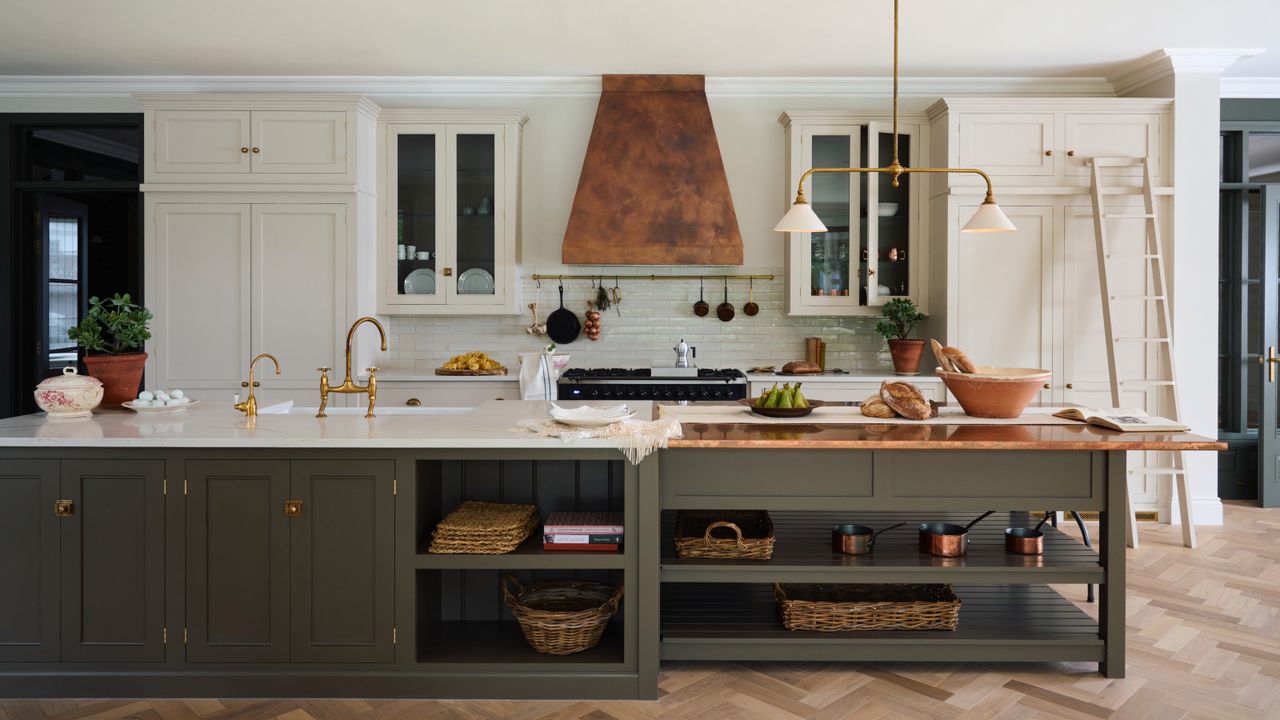
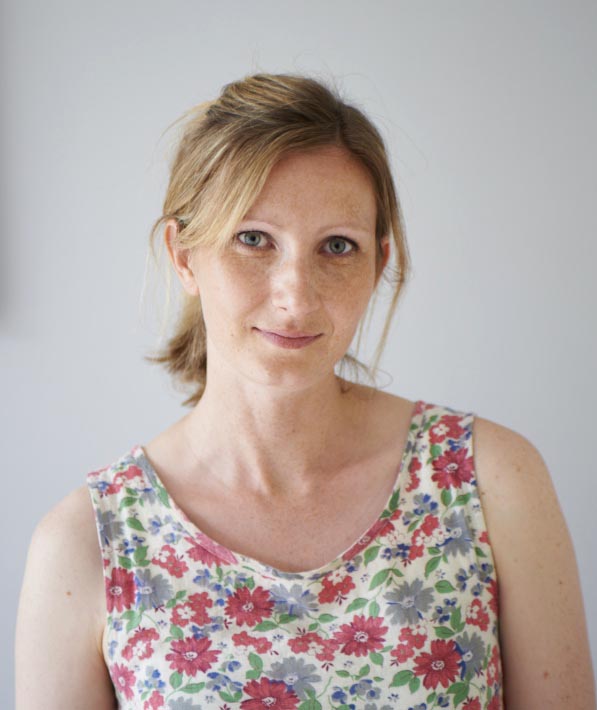
The kitchen is typically the most hardworking room of any house, and what you store in the cabinets will dictate how well you are able to use these vital spaces.
To make the most of your kitchen cabinets, our professional organizers reveal eight items they never keep here, and explain what you should get rid of, swap or move elsewhere – and why when decluttering your kitchen.
1. Pantry staples in packaging
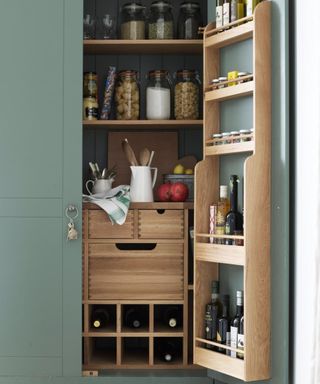
First on the proverbial chopping block is getting rid of bulky product package such as cereal boxes.
Cara Palmer, organization and decluttering expert, founder OrganizeEveryRoom.com explains, 'Cereal, pasta, rice, and snacks should be decanted into airtight containers. This preserves freshness and creates a uniform height that maximizes vertical space and makes items easier to locate.
OXO Good Grips POP containers, from Amazon, are perfect for this. Their airtight seal and modular design let you customize your storage setup.'
Changing these up also means you can stack containers, which again will save space and keep this particular cabinet a lot more streamlined.
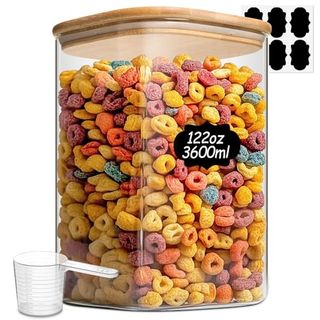
Glass jars with airtight lids are the the perfect way to keep your cereal crunchy, and free from microplastics. These non-toxic glass containers are BPA and Phalate free, and winner for cleaner living.
2. Cleaning materials
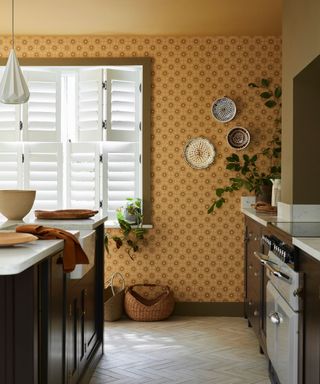
Cleaning products should be kept under the sink or near their point of use, and not in vital kitchen cabinets. Learning how to store cleaning supplies will help to maximize their efficiency, especially if eco friendly.
'While under-sink storage is perfect for everyday kitchen cleaners, additional cleaning supplies used throughout the house should be stored near where they're used,' agrees Cara. 'For under-sink organization, the Kitstorack Under Sink Organizer 2-Tier system, from Amazon, makes excellent use of vertical space while keeping cleaning supplies easily accessible.'
This storage system will transform your under the sink space to make use of vertical room.
3. Occasional dinner and glassware
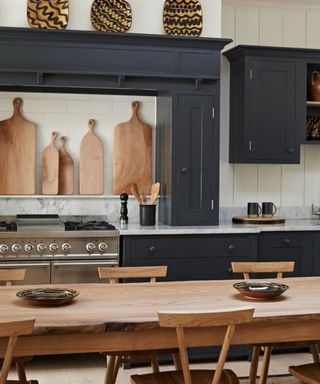
Those special sets your received when you got married, or heirloom cutlery that's been passed down needs to be kept somewhere more appropriate than high traffic kitchen cabinets.
'Even if you have never opened the place settings, wedding china should not be stored in your kitchen cabinets,' says Courtney Cummings, owner at The Stylish Organizer.
So where should we keep these gems? 'Find a great place in your dining room to display your favorite pieces, or make room in your basement to store these items,' suggests Courtney. 'Fine crystal is delicate and also warrants a showcase moment. Pick your favorite 4-6 glasses and find a shelf outside of the kitchen to display these pieces. Lastly, if you don’t use your china or crystal, find a friend, family member, or charity that will take them off your hands.'
Check out our three tablescaping storage ideas below that will move these pieces out of your kitchen cabinets.
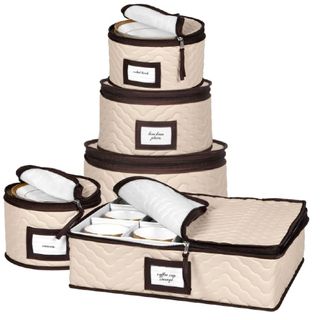
Keep your special dinnerware and glasses in these quilted boxes that will keep them safe and dust free until you need them. Each of these is able to house 12 items, you including plates, mugs and saucers. To avoid breakage, don't stack under other items.
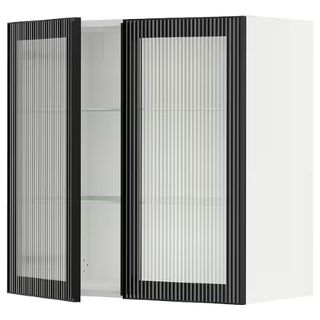
Fluted glass is right on trend. This style is perfect for storing occasionally used dinner and glassware, as it allows it to be 'seen' whilst keeping it dust-free. The shelving is adjustable and there's a door damper for quiet closing.
 Versatile storage
Versatile storage
Treat your best tableware to this beautifully made modern storage cabinet that has two framed rattan doors, internal adjustable shelving and one shelf below. With this flexible storage you can free up your kitchen cabinets in no time.
4. Bulk baking goods
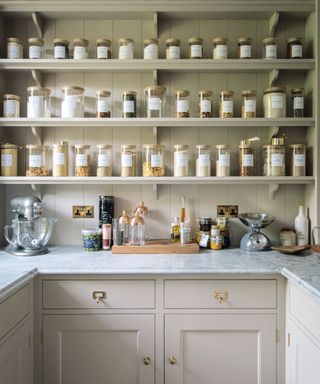
For similar reasons to cereal and dried goods, baking items in packaging can take up more space than they need to. If you buy baking goods in bulk, don't clog up your kitchen cabinets with things you won't use every day.
'Large bags of flour, sugar, and other baking staples should be decanted into stackable containers with wide mouths for easy scooping,' says Cara.
If you can, keep them in a pantry, Cara recommends this fabulous set below, 'It's specifically designed for baking ingredients and has helpful features like built-in flour levellers.'
Just make sure the storage is air tight to keep your pantry pest proof.
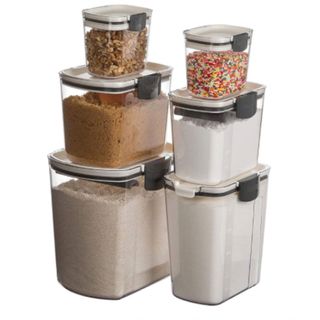
This six-piece set of airtight containers is perfect for sugar, flour, nuts and sprinkles – all of your baking goods in one place. They are stackable and each container features measurement marks so you can monitor ingredient levels.
5. Rarely used appliances
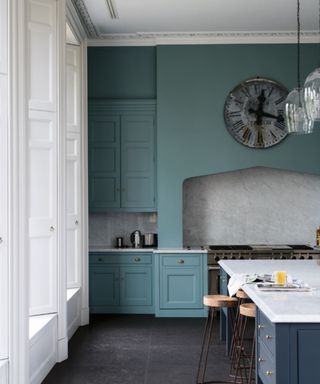
Whether it's the hand whisk, the bread or smoothie maker, these often-bulky appliances can easily accumulate in the back of your kitchen cabinets, and before you know it, you've unwittingly ignored ideal appliance placement rules for a harmonious kitchen.
'These tend to take up a lot of room in kitchen cabinets,' says Heather Aiello, CEO & founder of The Organized You. 'I suggest the ones that are used daily can stay in either a cabinet or the corner lazy Susan. The appliances that are used infrequently should be stored elsewhere.'
Move lesser-used appliances to a top or lower shelf of a pantry.
Courtney adds, 'How often do you really use that ice cream maker? What about your food processor? And the stand mixer?If it isn’t in your daily or weekly rotation, find a spot in your pantry or utility closet for these small appliances.'
Lazy Susan's as Heather suggests are a great option, but do have a declutter first and if you haven't used your appliances for six months it might be time to give it away. We like the 10" Lazy Susan turntable from Target that's non-slip and has great reviews.
6. Paper goods and paperwork
This may seem an obscure one, but we can quickly acquire things that clutter up our kitchen cabinets. 'Paper Towels and other paper goods also take up a lot of space. If you are storing these in your kitchen cabinets, consider relocating them to another area to free up space for your daily items,' advises Heather. 'These tend to be bulky items, and you don’t need all your back stock in the kitchen. You can keep an extra roll of paper towels under the sink but everything else can be relocated.'
Courtney adds, 'Stacks of paper don’t belong in kitchen cabinets either. We do a lot of work in our kitchens, but paperwork shouldn’t be one of them. Designate a home for mail, papers, and bills. Create a system that make sense for your home, but don’t allow stacks of paper to take over your kitchen cabinets. A home office or entryway closet is a better option for these things.'
Learn how to organize your paperwork to stop it creeping into cooking and dining areas.
Whilst buying in bulk is cost effective, Cara suggests only keeping the current package in the kitchen, 'The Amazon Basics three shelf adjustable heavy duty steel wire rack provides sturdy, adjustable storage for bulk items,' she says. Keep shelving like this in your basement or garage.
7. Items that are old
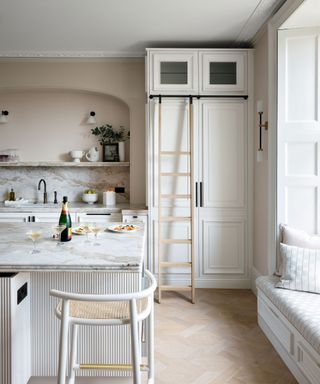
One of the main reasons our kitchen cabinets become and stay cluttered is because we hold on to things for too long.
Audra N George, owner and professional organizer and owner of Pretty Neat: An Organization Solution says, 'There are two key items that you shouldn't keep in your kitchen cabinets – expired items or items that you do not use anymore and old, workout bakeware.'
Every six months go through your kitchen cabinets and check the dates on your food items, then give your bakeware a thorough look over, if you use non-stick and it's scratched it needs to be replaced as the coating is compromised.
8. Things that change with temperature
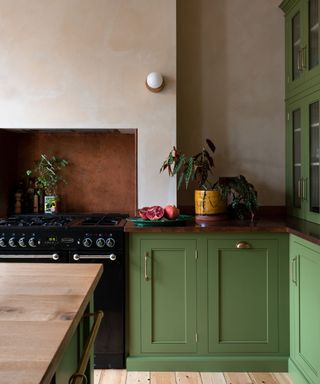
Kitchen cabinets that get the sun, or those next to the cooker can be known to get a little warm, which risks spoiling or reducing the efficacy and flavor of various kitchen items stored in them.
Courtney explains, 'Don’t store items sensitive to change in temperature. Things like candles, certain spices, and oils are susceptible to temperature changes. Heat accelerates the oxidation process in oils, causing them to lose their qualities and become rancid.'
We've all seen bendy candles melt if near a heat source, but more is at risk. 'Spices can lose their flavor if exposed to heat or constantly changing temperatures, keep items like this in a cool, dry place like a pantry,' suggest Courtney.
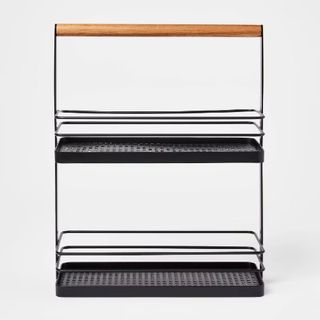
For the spices you use often it's better to get them out of the kitchen cupboard and on to the countertop. This metal two-tier spice rack has enough space for your favorite varieties. You can also fit a few condiments on it too. The wooden handle gives it a stylish finish and makes it easy to move about. Keep out of sunlight, however.
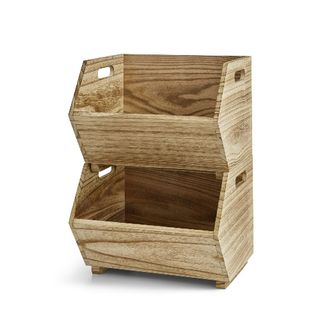
Candles are best stored in wooden boxes, it keeps them dry and together. This set of two can be used for both pillar and dinner candles and the large open top allows you to see the contents and remove them easily. Stackable is always a winner too, keep them in your garage, basement or pantry.
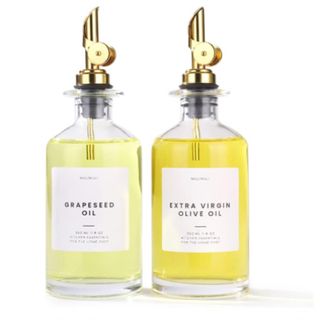
Decant all of your oil bottles into these two glass designs and keep then on your countertop next to the stove. Beautifully designed, they feature a unique dispenser spout and come with 38 waterproof stain-free labels.
Meet our experts

Over the past decade, decluttering expert Cara has transformed her own life through strategic organization, managing a full-time career while renovating eight rental properties and creating a dream home with her husband. Known for her practical, family-friendly systems and real-life solutions, Cara specializes in eliminating overwhelm and helping others reclaim their time, energy, and homes.

Before she dove into professional organizing, Courtney spent 16 years in the non-profit world as an event planner, program manager, and communications director. While she loved serving her community, she discovered her true passion: helping people find joy and serenity by creating beautifully organized spaces.

Heather has owned The Organized You for the last six years, previously she had sold her own company and decided to pursue her love of organizing and helping people to transform their lives. She is a member of the National Association of Productivity & Organizing Professionals (NAPO) and independent representative for The Container Store’s In Home Organizing Program which allows her to offer custom closet design to her clients.

Audra is owner and professional organizer at Pretty Neat: An Organization Solution in Oklahoma City, Oklahoma, a professional organizing company that serves the unorganized, the overwhelmed, and the busy family. Audra believe organization can truly impact every area of people’s lives.
As with most cupboards and cabinets that store things, we keep putting things in them without much thought, to the point where they become full of items that shouldn't be there.
Learn to make your maximize kitchen storage without having to invest in new cabinets by taking our experts advice on what should be kept elsewhere.
Sign up to the Homes & Gardens newsletter
Design expertise in your inbox – from inspiring decorating ideas and beautiful celebrity homes to practical gardening advice and shopping round-ups.

Sophie has been an interior stylist and journalist for over 20 years and has worked for many of the main interior magazines during that time, both in-house and as a freelancer. On the side, as well as being the News Editor for indie magazine, 91, she trained to be a florist in 2019 and launched Flowers Inside My Head where she curates beautiful flowers for modern weddings and events. For Homes & Gardens, she writes features about interior design – and is known for having an eye for a beautiful room.
You must confirm your public display name before commenting
Please logout and then login again, you will then be prompted to enter your display name.
-
 How to grow red hot poker – for low-maintenance and long-lasting flower spikes that pollinators adore
How to grow red hot poker – for low-maintenance and long-lasting flower spikes that pollinators adoreIf you enjoy colorful, vibrant borders, there can be no better perennial to grow than red hot pokers
By Thomas Rutter Published
-
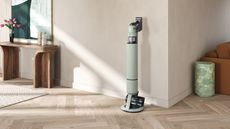 Samsung has just released 'the world's most powerful cordless vacuum' – as an expert vacuum tester, I'm intrigued but skeptical
Samsung has just released 'the world's most powerful cordless vacuum' – as an expert vacuum tester, I'm intrigued but skepticalIt's said to be more powerful than the top Dyson
By Dan Fauzi Published
-
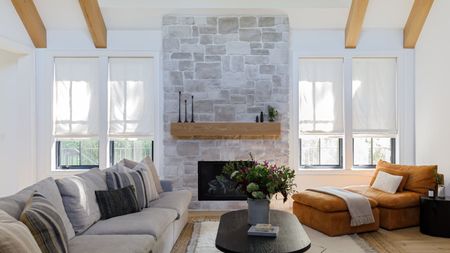 'They all feel chaotic’ – 6 things that make a room look really messy and what to do for an instant lift
'They all feel chaotic’ – 6 things that make a room look really messy and what to do for an instant liftEasily make your home less stressful by fixing these common faux pas
By Chiana Dickson Published
-
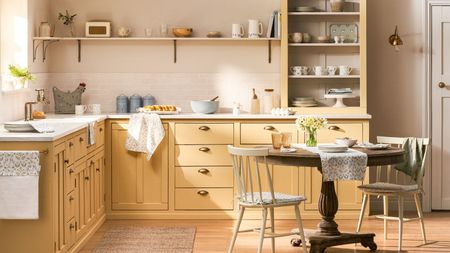 9 things you need to declutter in April 2025 – tossing these need-to-go items will maximize your space this spring
9 things you need to declutter in April 2025 – tossing these need-to-go items will maximize your space this springSay goodbye to winter clutter by clearing out lingering items
By Chiana Dickson Published
-
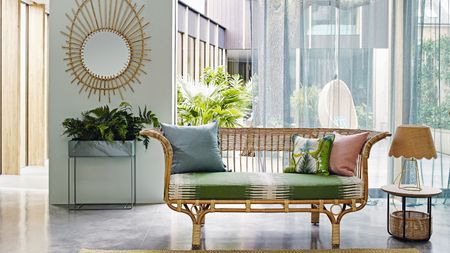 What is biophilic decluttering? This 'return to nature mandate' will transform chaos to calm at home
What is biophilic decluttering? This 'return to nature mandate' will transform chaos to calm at homeEven small changes will make a big difference
By Ottilie Blackhall Published
-
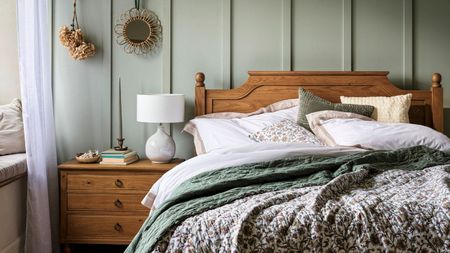 The 'Curated Clutter Method' is perfect for procrastinators – put an end to 'the all-too-familiar feeling of taking on too much'
The 'Curated Clutter Method' is perfect for procrastinators – put an end to 'the all-too-familiar feeling of taking on too much'It takes breaking items down into categories to the next level
By Ciéra Cree Published
-
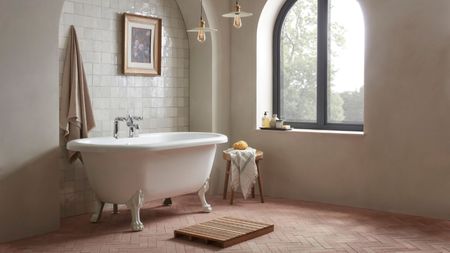 This is the most important and impactful thing to quickly declutter from your bathroom this weekend
This is the most important and impactful thing to quickly declutter from your bathroom this weekendProfessional organizers urge you to get rid of expired items to avoid adverse reactions
By Ottilie Blackhall Published
-
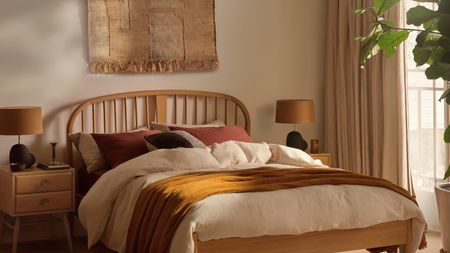 I tried a three-month clothes-buying ban to reduce clutter – it taught me a crucial lesson about my hoarding and saved me nearly $500
I tried a three-month clothes-buying ban to reduce clutter – it taught me a crucial lesson about my hoarding and saved me nearly $500Plus, it has drastically changed how I see my shopping habits
By Chiana Dickson Published
-
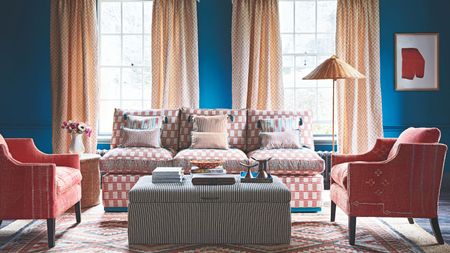 What to easily organize this spring based on your Zodiac sign – it'll turbocharge decluttering and banish motivation blockers
What to easily organize this spring based on your Zodiac sign – it'll turbocharge decluttering and banish motivation blockersAligning your decluttering mission with your star sign will maximize efficiency, astrologers say
By Ciéra Cree Published
-
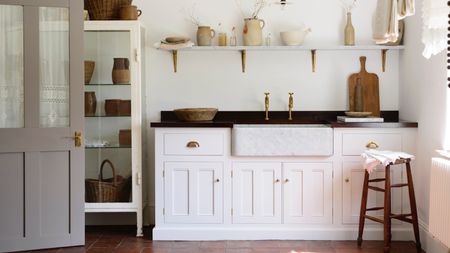 5 pantry items you can skip decluttering this spring, from spices to dry beans and more
5 pantry items you can skip decluttering this spring, from spices to dry beans and moreSave time and energy this season with this advice from our pros
By Ottilie Blackhall Published